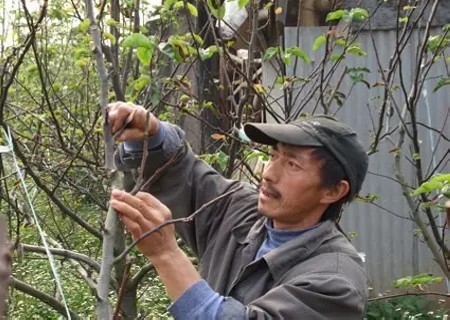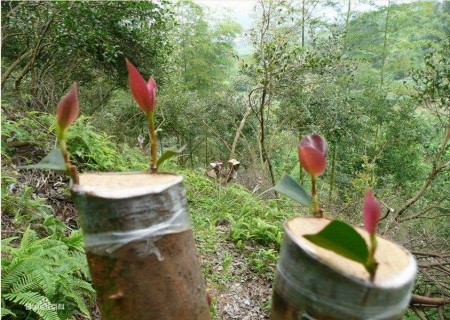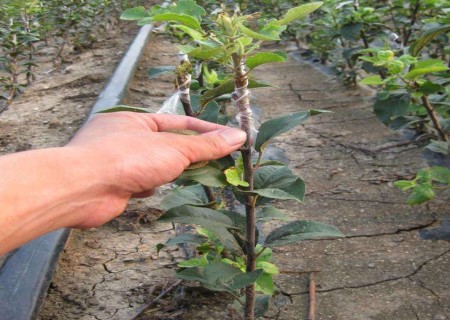High yield methods of pear trees after grafting
Pear is widely cultivated in the north and south of China, and has strong adaptability. Tolerance to extensive management, easy to early fruit and high yield, long economic life. Fruit storage and transportation, good commodity, long supply period, welcomed by domestic and foreign markets. Grafting is to optimize tree quality, enhance resistance and promote high yield.
Grasp the ratio of output and joint. The practice proved that the trunk girth, crown diameter and total branch quantity of multi-joint grafting increased obviously, which basically maintained the balance of aboveground and underground parts of tree body and the absorption and supply capacity of root system, and made the grafting survival rate reach more than 99%. The number of joints is determined by the original yield of the tree. Generally, for the trees with more than 200 kg of origin, one scion is 500 grams of fruit; for those with less than 200 kg, one scion is 1000 grams of fruit.

Grafting with flat branches. Before re-grafting, branch cleaning is carried out on the tree, and part of large branches and over-dense branch groups are thinned according to the requirements of tree shaping. The branches should be grafted according to the branches all cut, cut flat and then grafted, do not cut one after another, so as not to move inconvenience or damage has been grafted good scion. The grafting method adopts splitting and cutting grafting, changes traditional straight branch grafting according to the thickness of the stock branch of a short scion with 2 - 3 buds and a long scion with 3 - 5 buds, selects horizontal branches as the stock, inserts the cut scion the horizontal branch or the drooping branch, facilitates the accumulation of organic nutrients, and avoids direct insertion of the upper branch on the back as much as possible. The joint is wrapped with film, and the scion tip is sealed with wax to prevent water loss.
Don't take off your heart, untie it at the right time. That is to say, the new one grown after grafting in that year cannot be picked, which is beneficial to the capping of branches and easy to form flower buds. Only strong branches or competing branches need to be twisted. In the first ten days of July, the joint shall be untied after healing, and the joint shall continue to be bandaged if it is not healed, and then untied after all the joints are healed.
A tree determines its yield, a flower determines its fruit. For the fruit trees grafted in the same year, the main method of winter pruning is to cut gently and slowly to leave more branches. In the second year of flowering, according to the age, crown size, branch burden, do "to tree yield, to flower fruit".
Water is the limiting factor for high quality and high yield of pear trees. If the water absorbed by roots is not enough to supply leaf evaporation, the water in fruits will be taken away by leaves, resulting in thin, dull fruits, less pulp juice, dry and soft, with voids and developed stone cells. Insufficient moisture in June, too dry, will make the calyx end all hardened, forming iron pear. In July, when the water content was seriously insufficient, some cells in the flesh were not well developed or even died, and the stone cells in the flesh increased significantly and the soft cell membrane became cork, resulting in uneven fruit surface and formation of "lump" pear.
Pear trees are cross-pollinated species, most varieties do not bear fruit by self-flowering, so pollinated varieties must be matched with each other at flowering stage. The best ratio of main plant to pollinated varieties is 2:1 or 1:1, and at least 3:1 or 4:1, so as to achieve high and stable yield. Three thinning technology is to grasp the flower bud thinning, flower bud thinning and fruit thinning period and method correctly.
Time: 2019-06-09 Click:
- Prev

Cutting and grafting techniques of Pear trees
Pear branch grafting can be divided into split grafting, tongue grafting, leaning grafting and other forms, the most commonly used is split grafting, cutting grafting. Cutting is often carried out in early spring (mid-late March) when trees begin to sprout but have not yet sprouted. The diameter of the rootstock should be 2 cm to 3 cm, and the rootstock should be cross-cut at 2 cm from the base of the branch.
- Next

Management methods of grafted seedlings of Pear trees
The growth of the grafted pear seedlings is often inconsistent because of the high density in the sowing nursery. It is best to separate the grafted semi-mature seedlings before the next spring, so as to expand the nutritional area of the seedlings. Cutting off the root system also solves the problem of overlong main root of rootstock.
Related
- Fuxing push coffee new agricultural production and marketing class: lack of small-scale processing plants
- Jujube rice field leisure farm deep ploughing Yilan for five years to create a space for organic food and play
- Nongyu Farm-A trial of organic papaya for brave women with advanced technology
- Four points for attention in the prevention and control of diseases and insect pests of edible fungi
- How to add nutrient solution to Edible Fungi
- Is there any good way to control edible fungus mites?
- Open Inoculation Technology of Edible Fungi
- Is there any clever way to use fertilizer for edible fungus in winter?
- What agents are used to kill the pathogens of edible fungi in the mushroom shed?
- Rapid drying of Edible Fungi

